Project Car Diaries: My ’69 Charger Gets Big Diff Energy and LSD Goodness
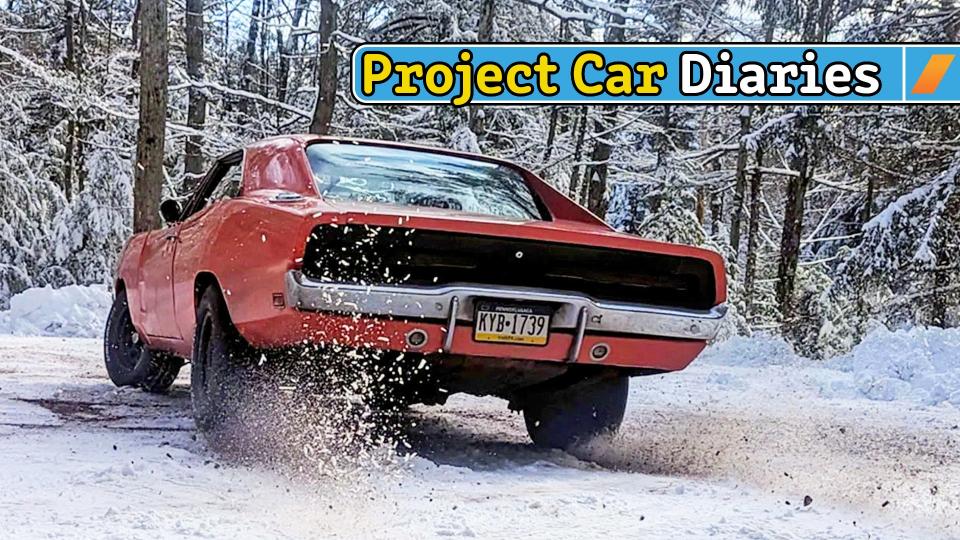
Since it entered my family in the 1980s, the weakest link of my 1969 Dodge Charger has been its 8-1/4-inch differential. That rear end was meant to be used behind small V8s like the 318 this car was born with — not the big block and manual transmission it's got now.

For those of you wondering, the differential's job is to distribute power from the transmission to the wheels. The name comes from its ability to turn the wheels at different rates, which is necessary when turning as the tires need to cover unequal distances. It's not at all uncommon to change a final drive gear ratio to tweak performance, or to offset the effects of an aftermarket set of wheels and tires and, possibly install a limited slip or a locker of sorts. In other cases, like this one, you'll need to move to something a little beefier.
Not all differentials are built the same — some are much stronger than others. And when you start building power and driving harder, the amount of abuse a differential will take becomes a major concern. While not a hard and fast rule, the size of the ring gear, which is 8-1/4 inches in the housing that's been in the Charger, correlates with strength. There's a lot more to consider, like housing construction, axle material, and spline count, but a bigger numerical value generally means stronger.
Amazingly, the small rear end I've been running has held up after years of abuse. But I'd always known I'd need to replace it at some point. I figured a snapped axle or carrier carnage would be my cue to put some proper equipment between the rear tires, but that wasn't the case at all. Instead, a ding in the driveshaft would put me on a slippery slope of making major upgrades to correct a "small" issue.
Bending my driveshaft pushed me to finally upgrade to a Chrysler 8-3/4 differential. This was my first step into the rabbit hole of making a long list of those debt-building "while I'm at it" modifications. A happy ending is a big ask when that happens. Yet somehow, I managed to land one, as it was the last thing standing between me and my dream car.

A Bent Driveshaft is Bad News
Last winter, I tore the Charger apart to paint it. While the engine was out, I discovered all kinds of signs that indicated a balancing issue with the engine. It turned out that the harmonic balancer had slipped, and I replaced it, along with the flywheel, to ensure everything was good to go. When vibration issues persisted at high speeds, I was a little more than frustrated.
Initially, I was stoked to have finally found the source of my problems when I discovered a ding in my driveshaft. I thought it'd be simple enough to fix until I called the local driveline shop. The folks over there let me know that I was pretty much screwed and that I'd be better off replacing it.
Since this is a Dodge, even that's pretty extreme. This driveshaft features swatched tubing and yoke sizes that have been discontinued. So, even though I had the yokes, finding a replacement tube to fit them to was too much trouble for my local shops to want to deal with.

Building a new driveshaft would mean replacing the yoke at the transmission and the differential. Because the 8-1/4 uses a crush sleeve behind the yoke to set pinion bearing preload, I’d also find myself tearing back into a differential that I'm aiming to replace anyway.
Instead of doing all of that, I decided to start the hunt for a new, stronger differential. I called up an old friend who happened to have an 8-3/4 lying around that he'd sell me for cheap. I also located a used driveshaft sourced from a local 1969 Charger project for pennies on the dollar that would tie it all together. So, that's the way I went.
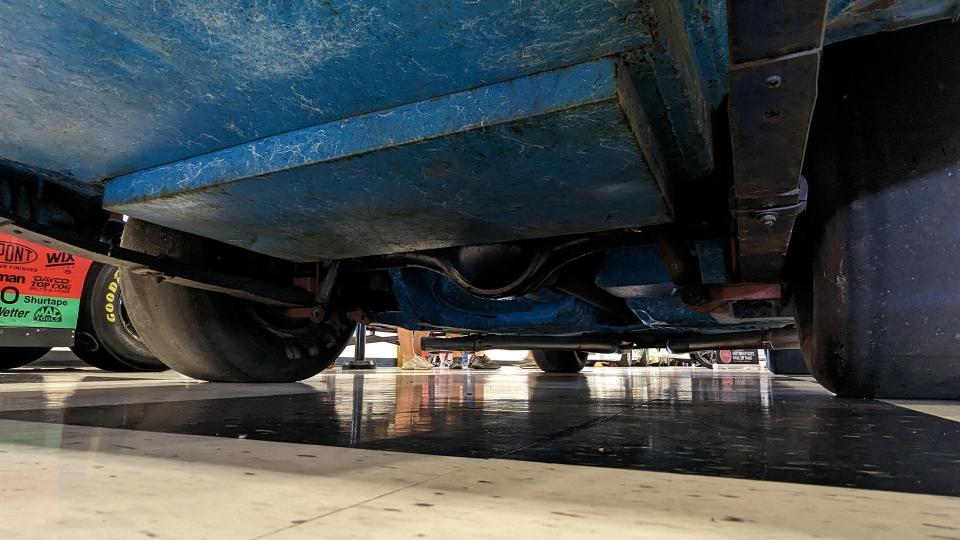
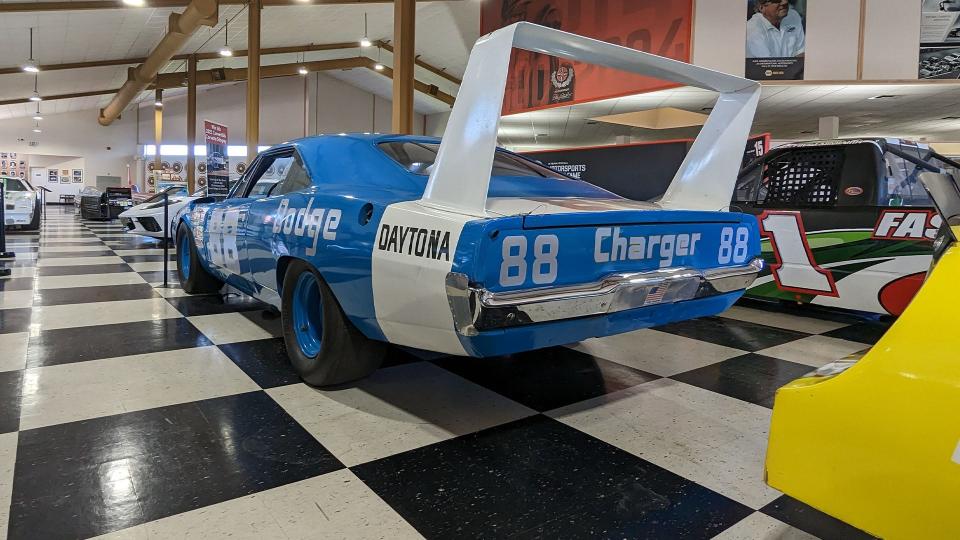
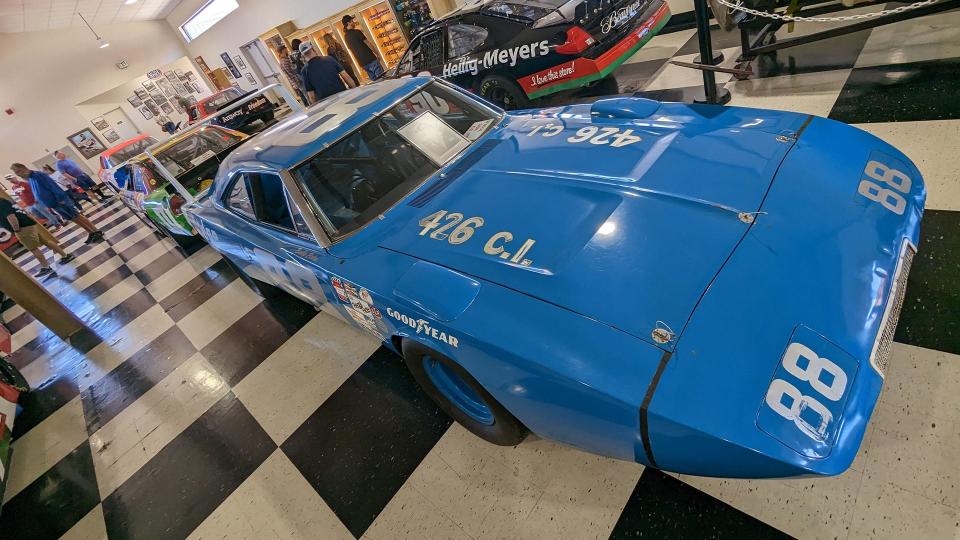
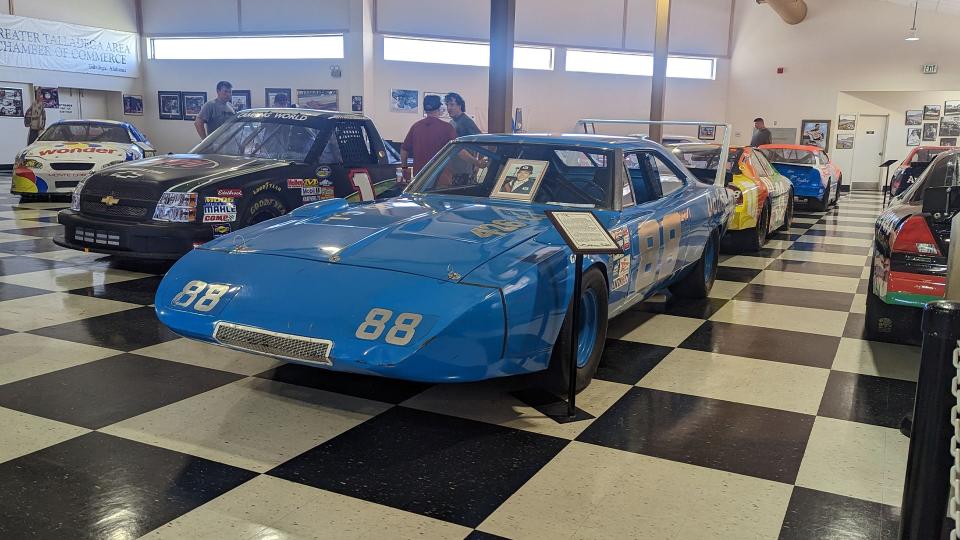
Poor Man’s Overdrive
The 8-3/4 isn't the strongest differential that Chrysler's muscle cars of the 60s came with. That award goes to the Dana 60, which was the differential of choice for cars that rolled out of the factory with a 440 or a 426 Hemi and a manual transmission. The Dana is a heavy-duty unit that was better suited for the intense shock-loading that high-torque stick cars would drop on it. So, why'd I go for the 8-3/4 instead?
Aside from being more affordable, the 8-3/4 offers another major advantage. This rear end uses a drop-out center section. In other words, it gives you the option to set up multiple carriers, allowing you to essentially change your rear gear ratio relatively easily. For a street car like this, it's a viable alternative to overdrive, as I could have a carrier for regular around-town use and another for long trips down the highway. Obviously, it's not ideal as it means crawling under the car and swapping the pumpkin instead of just throwing the transmission into fifth gear, but I’ll take what I can get.
Don't let the point about it not being Chrysler's strongest rear hang you up, though. The insanely robust nature of a Dana 60 shouldn't overshadow how strong the 8-3/4 is. These rear ends could take a ton of abuse, and after finding one under a NASCAR-spec Hemi Daytona Charger, which is equipped with a manual transmission, I'm more than confident in its ability to survive this street car.

Building a Proper Pumpkin
The assembly I picked up came out of another 1969 Dodge Charger. Swapping it in was straightforward and even came with the benefit of ever so slightly tucking the rear tires in, giving me options to tweak the ride height in the future. The 8-1/4 rear-end housing is actually a touch wider, and the tires ran into the lip on the inside of the quarter because of it.
Things got interesting when it came to carriers, though. The assembly came with a center section that had been set up with a 4.56:1 rear gear and an open carrier. That's way too short for anything outside of racing, but I'd intended to make do as I generally don't get on the highway much. Unfortunately, the teeth were all chipped up. I'd need to find something else to avoid even more headaches.

Luckily, I've made friends with yet another Charger owner—that’s four total in this story for those of you counting. He'd lent me two pumpkins, allowing me to put the car back on the road while I set up my own.
Initially, I set out with reasonable intentions to build a Sure-Grip carrier. Then I stumbled upon a pre-owned PowerTrax Grip Pro unit that I could buy for the same price as a clutch-type limited slip. It's a much more durable, much more fun piece. It did require me to upgrade to non-adjustable axle bearings, but you only live once, right? After jumping on it, I promptly snagged myself a set of 3.55:1 gears and an install kit from Quick Performance, along with snap-ring-type axle bearings from Moser.

This wasn't the first time I set up a differential, but it is the first time I've worked with a removable center section. Every other time I've worked on rear ends, it was under the car. Building the pumpkin on the bench was a massive step up. The case I'm using also uses shims as opposed to a crush sleeve to set pinion preload, so the entire building process was quick, painless, and extremely rewarding, further solidifying my love for the 8-3/4.
Max Traction Ice Skates
Before all of this, the Charger had a limited slip carrier with 3.55 gears. If it wasn't for the PowerTrax Grip Pro, I'd feel like I'd spent tons of money and time just to circle back to the start with a slightly stronger rear end. That carrier makes it feel like a real upgrade, though.
PowerTrax’s Grip Pro carriers are pretty killer pieces. Under normal driving conditions, they feel just like any other limited slip, which is great for daily driving. But rather than using clutches to distribute torque, they use helical gears that smoothly transfer torque to where it's needed. As more throttle is applied, the gear-separating forces gradually increase distribution, which is where PowerTrax's claims of variable traction come from. In other words, more throttle gets you closer to a fully locked rear end.
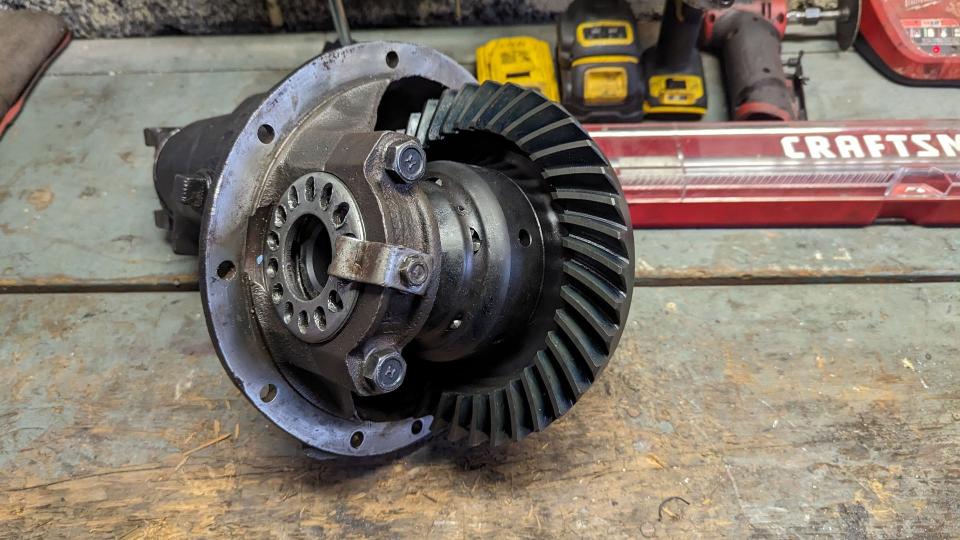
What it all means is that you have a limited slip rear end that's as aggressive as you want it to be, just short of being a full-on locker. This style of carrier is incredibly smooth and offers stupid-good traction. I've driven around snowy gravel roads, icy pavement, and on rainy nights. As long as I'm staying reasonable with the throttle, it's perfectly comfortable in any condition.
It's when you hop on it that things get crazy. More throttle input pushes it nearer to locking up, and that's great for hard launches when traction is optimal. On street tires and in sub-optimal conditions, it basically turns your car into a burnout machine. That's awesome when the time is right, but it presents a bit of a learning curve.
It’s all about finesse and figuring out just how much throttle you can apply before the tires break loose. And since the cam in this motor really doesn't make power until a little later on in the RPM range, I found myself regularly dancing on that line while learning how to drive it. That’s always the case when you don’t have luxuries like traction control, but it’s even more pronounced with this setup. In all honesty, I accidentally started a nasty burnout after a short conversation with a dude at a red light after a light rain. He said he liked the car, so I had to commit once it broke traction.
Not that easily breaking the tires is necessarily a bad thing. Many would say that this is exactly the attitude you want when driving an old warhorse like this.
It's also not like the traction issues with an open differential in similar situations — even if you do get a little throttle happy on a slick patch like I did, there's never that sense of lack of control or unpredictability. It's still a limited slip that'll bias power to the side with more traction, not the other way around. Once you learn its behavior, it becomes predictable, comfortable, and extremely fun to romp with.

That, plus the added benefits of increased strength and no need for friction modifiers, makes the PowerTrax Grip Pro a great fit for this car. Where this type of carrier falls short is when one wheel is off the ground. In that case, it will function like an open rear and require the use of the brakes to simulate traction on both ends to get the grounded tire moving. It's also not serviceable like a clutch-style setup. Either of these factors could break the deal for many vehicles, but I don't view them as much of a concern, considering I'm not four-wheeling, and it should still offer a long enough service life for me to be happy with my purchase.
Reconnecting With My Passion
All of this took place over a few months, and it all started with a bent driveshaft. What should have taken no longer than a weekend to sort out turned into an entire ordeal. Something like this can be incredibly discouraging, and it was ... right up to the moment I put the fresh Grip Pro-equipped carrier in.
That bent driveshaft caused me to hyper-fixate on a problem, preventing me from standing back and taking in everything I've accomplished with this car. Once I fixed it, it all came together. The payoff of all my efforts so far compounded into that moment.
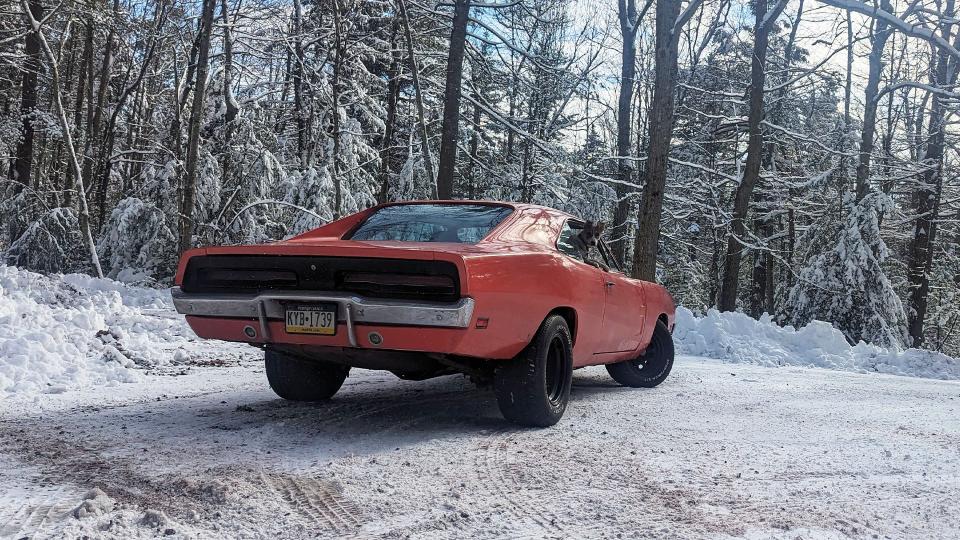
I've always been critical of my work because I know there's always room for improvement. But, for the first time, I'm incredibly proud of what I've achieved here. This car looks and drives exactly like a muscle car should. It has the right balance of roughness and elegance in both aspects. It's far from perfect, but the vision is finally tearing into reality, and it’s all because of me.
More than that, this last hurdle has put me back in the driver's seat and has allowed me to reconnect with a passion. For the first time in years, I feel like I've really put down the wrench and gotten back to doing what I love, which is driving. For far too long, I've forgotten that I work as hard as I do on the car because it enhances that experience. I still have plenty to do to finish this thing up, but this has inspired me to do way more driving than wrenching for the foreseeable future. That doesn’t mean the updates are going to slow, though. We’ve got plenty of cool stuff to come.

 Yahoo Autos
Yahoo Autos 